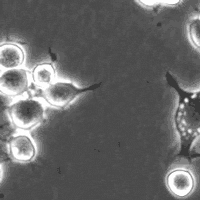cas/definition.php (people or term)

Schemata
CAS Systems develop order or pattern ‘for free’: this means that order arises as a result of independent agent behaviors, without need for other inputs.
Text in progress
Emerging Schemata
In some systems agent rules are fixed: the agent has no ability to change its operational schema and rules are static. In others, agents learn over time, with the results of past rule enactments serving as a source of input, or data, which can then be used to generate new rules. Gradually, agents reorganize their rule protocols in order to better align with their environmental inputs.
Another way to conceptualize such adjusting 'rules' is with the notion of 'schemata'. Murray Gell-Mann, one of the pioneers of complexity thinking, positioned schemata as the kinds of 'models' agents form of their environment. Agents enact different kinds of rules, with each rule being a kind of proposition about how the agent can best 'fit' within the environmental context. When the context pushes back - responding or not responding well to a particular rule set, the agents are forced to revise their schemata or model (with a resulting revision of rules). Each rule is therefore a kind of fitness proposition: a 'schemata' of how to operate within a given context, and these schemata are themselves evolving.
The difference between 'rules' and 'schemata' seems to imply a more active, cognitive model of context being generated. Agents operating via simple rules have no need of a 'model' of their context: they simply require feedback on whether or not a rule achieved a goal, and then a rule about how and when to change rules.
But the notion of schema implies a more active formulating about the context of operation - a kind of sleuthing around the environment, where rules are not simply blind variations, but are subject to an emerging proposition about the nature of a context. As such, schemata (or 'schema' as they are sometimes called), alludes to competing models of the context that an agent believe itself to be operating within, and how the shifting models sets then effect the nature of the subsequent rule sets.
Gell-Mann writes:
"each schema provides, in its own way, some combination of description, prediction and (where behavior is concerned) prescriptions for action"
Cite this page:
Wohl, S. (2022, 7 June). Schemata. Retrieved from https://kapalicarsi.wittmeyer.io/definition/emergence-of-fit-behaviorsprotocols
Schemata was updated June 7th, 2022.
Nothing over here yet
Navigating Complexity © 2015-2025 Sharon Wohl, all rights reserved. Developed by Sean Wittmeyer
Sign In (SSO) | Sign In
Related (this page): LINKS (56), Adaptive Capacity (21), Rules (213), Iterations (56),
Section: terms
Non-Linearity Related (same section): Related (all): Urban Modeling (11, fields), Resilient Urbanism (14, fields), Relational Geography (19, fields), Landscape Urbanism (15, fields), Evolutionary Geography (12, fields), Communicative Planning (18, fields), Assemblage Geography (20, fields), Tipping Points (218, concepts), Path Dependency (93, concepts), Far From Equilibrium (212, concepts),
Nested Orders Related (same section): Related (all): Urban Modeling (11, fields), Urban Informalities (16, fields), Resilient Urbanism (14, fields), Self-Organized Criticality (64, concepts), Scale-Free (217, concepts), Power Laws (66, concepts),
Emergence Related (same section): Related (all): Urban Modeling (11, fields), Urban Informalities (16, fields), Urban Datascapes (28, fields), Incremental Urbanism (13, fields), Evolutionary Geography (12, fields), Communicative Planning (18, fields), Assemblage Geography (20, fields), Self-Organization (214, concepts), Fitness (59, concepts), Attractor States (72, concepts),
Driving Flows Related (same section): Related (all): Urban Datascapes (28, fields), Tactical Urbanism (17, fields), Relational Geography (19, fields), Parametric Urbanism (10, fields), Landscape Urbanism (15, fields), Evolutionary Geography (12, fields), Communicative Planning (18, fields), Assemblage Geography (20, fields), Open / Dissipative (84, concepts), Networks (75, concepts), Information (73, concepts),
Bottom-up Agents Related (same section): Related (all): Urban Modeling (11, fields), Urban Informalities (16, fields), Resilient Urbanism (14, fields), Parametric Urbanism (10, fields), Incremental Urbanism (13, fields), Evolutionary Geography (12, fields), Communicative Planning (18, fields), Rules (213, concepts), Iterations (56, concepts),
Adaptive Capacity Related (same section): Related (all): Urban Modeling (11, fields), Urban Informalities (16, fields), Tactical Urbanism (17, fields), Parametric Urbanism (10, fields), Landscape Urbanism (15, fields), Incremental Urbanism (13, fields), Evolutionary Geography (12, fields), Feedback (88, concepts), Degrees of Freedom (78, concepts),
